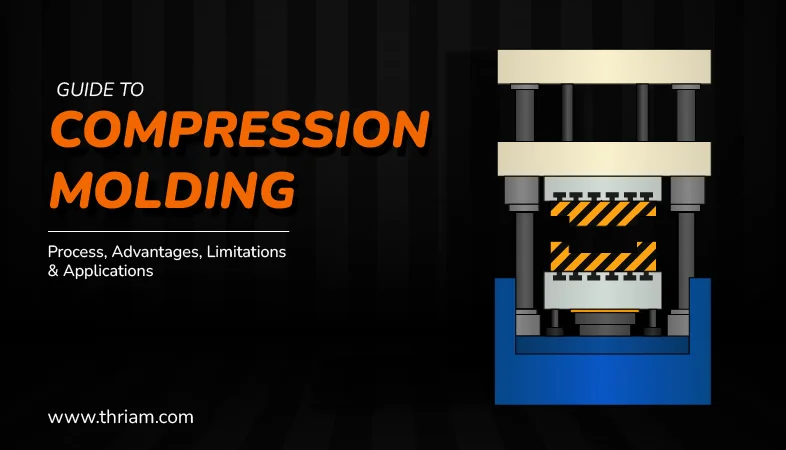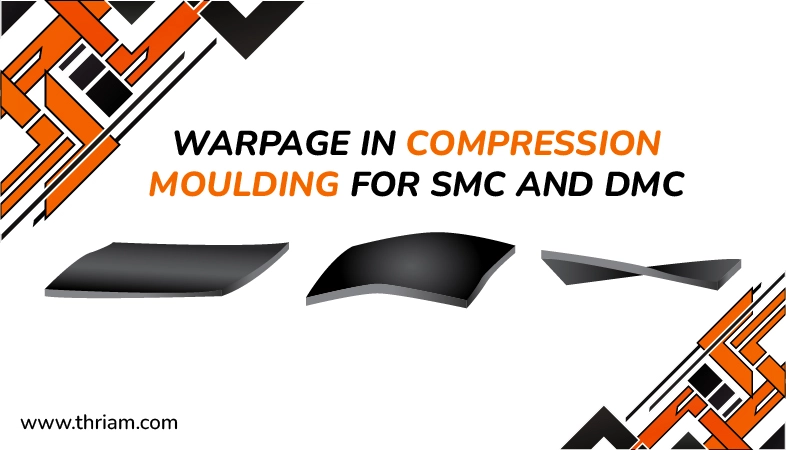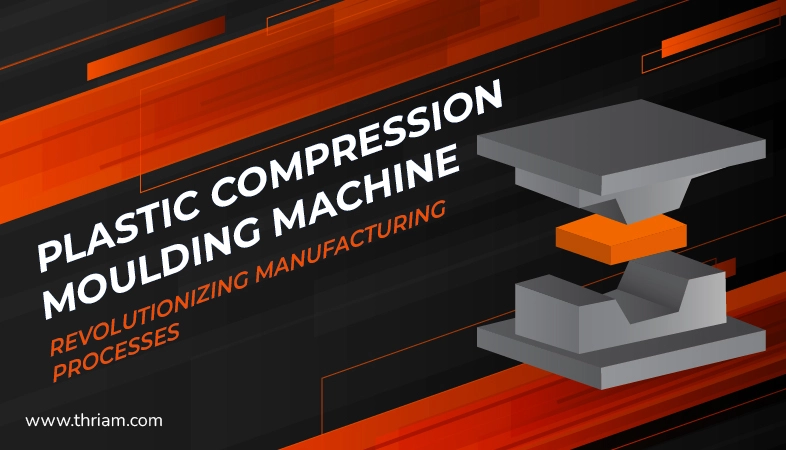Unleashing the Potential of Compression Molding: A Closer Look at its Advantages over Other Molding Techniques
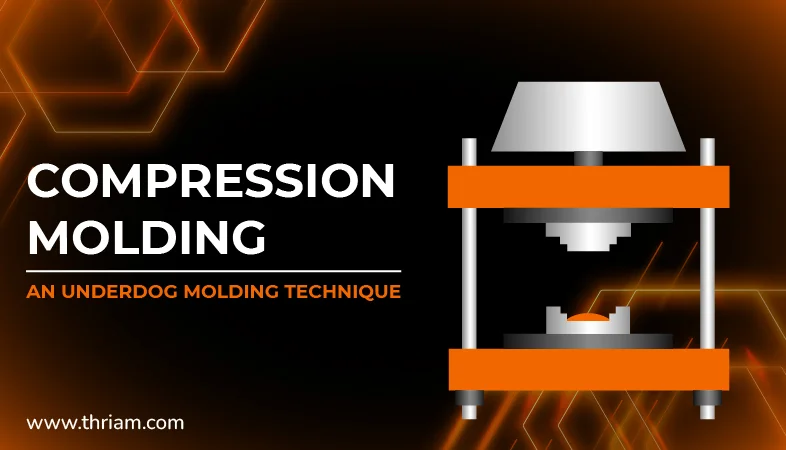
When it comes to manufacturing plastic products, selecting the right molding technique is crucial. The choice of molding technique can greatly impact the final product's quality, cost-effectiveness, and overall manufacturing efficiency. In this blog, we will explore the advantages of compression molding, particularly in comparison to injection molding and other molding techniques.
What is Compression Molding?
Compression molding is a versatile manufacturing process that involves the use of heat and pressure to shape and mold thermosetting materials. The process starts with placing the raw material, in the form of a solid or preheated granular form, in a heated mold cavity. Once the mold is closed, pressure is applied to force the material to conform to the mold's shape. The heat and pressure help cure the material, resulting in a strong, durable product.
Comparison of Compression Molding with Injection Molding
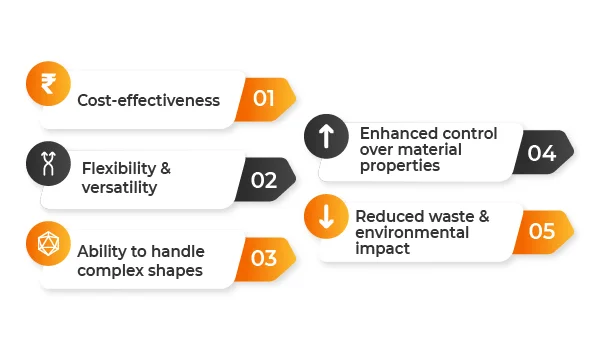
Injection molding is one of the most common and widely used molding techniques. It involves injecting molten plastic material into a closed mold cavity, where it solidifies and takes the desired shape. While injection molding has its advantages, compression molding offers several key benefits over this technique.
1. Cost-effectiveness
Compression molding typically requires lower upfront costs compared to injection molding. The molds used in compression molding are simpler in design and construction, resulting in lower tooling and equipment expenses. Additionally, the compression molding process can be adapted to various production volumes, making it suitable for both small and large-scale manufacturing.
2. Flexibility and versatility
Compression molding offers greater flexibility and versatility in terms of material selection. It can accommodate a wide range of thermosetting materials, including composites, rubber, and reinforced plastics. This flexibility allows manufacturers to choose the material that best suits their specific product requirements, resulting in superior performance and durability.
3. Ability to handle complex shapes
Compression molding is particularly effective for producing complex and intricate shapes. The application of pressure and heat during the molding process ensures excellent material distribution, resulting in uniformity and consistency across the product. This capability makes compression molding ideal for manufacturing products with detailed designs, such as automotive components or electrical enclosures.
4. Enhanced control over material properties
Compression molding allows for greater control over material properties and characteristics compared to injection molding. The controlled application of pressure and heat enables manufacturers to achieve precise material density, strength, and dimensional accuracy. This level of control ensures consistent quality throughout the production process, meeting strict industry standards and customer specifications.
5. Reduced waste and environmental impact
Compression molding generates significantly less waste compared to injection molding. With injection molding, excess molten plastic often leads to waste material that needs to be recycled or disposed of. In compression molding, the exact amount of material required is placed in the mold, resulting in minimal waste. This reduction in waste contributes to a more sustainable and environmentally friendly manufacturing process.
Comparison of Compression Molding with Other Molding Techniques
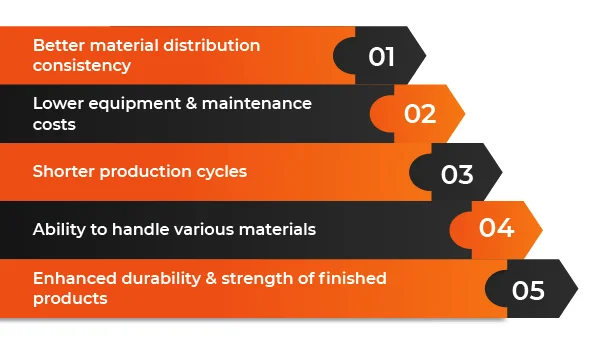
While injection molding is a widely used technique, compression molding also offers advantages over other molding techniques such as blow molding and thermoforming.
1. Better material distribution and consistency
Compression molding offers superior material distribution and consistency compared to other techniques. The application of heat and pressure ensures that the material evenly fills the mold, resulting in a uniform product with fewer defects. This level of consistency is particularly crucial for products that require precise dimensions and enhanced structural integrity.
2. Lower equipment and maintenance costs
Compression molding requires simpler and less complex equipment compared to other techniques. This translates to lower initial setup costs and reduced maintenance expenses. Additionally, since compression molding operates at lower pressures, it reduces wear and tear on molds and equipment, resulting in longer tooling life and lower maintenance costs in the long run.
3. Shorter production cycles
Compression molding offers shorter production cycles compared to some other molding techniques. The process of transferring and injecting molten material used in other techniques can be time-consuming. In compression molding, the curing process takes place within the closed mold, reducing overall production time. This efficiency can lead to higher productivity rates and improved turnaround times for manufacturers.
4. Ability to handle various materials
Unlike some other molding techniques that are limited to specific materials, compression molding can handle a wide range of thermosetting materials, including rubber, composites, and specialty plastics. As a result, compression molding is often the preferred choice for industries that require specific material properties, such as the aerospace and automotive sectors.
5. Enhanced durability and strength of finished products
Compression molding produces products with exceptional strength and durability. The compression and curing process create a highly dense material with improved resistance to heat, chemicals, and physical stress. This strength makes compression-molded products suitable for applications where reliability and longevity are paramount, such as in automotive and industrial components.
Conclusion
compression molding emerges as a highly advantageous molding technique when compared to other methods such as injection molding and other molding techniques. Throughout this blog, we have explored the various advantages it offers, making it a preferred choice for many manufacturers across industries.
Compression molding stands out due to its cost-effectiveness, flexibility, ability to handle complex shapes, and superior control over material properties. Its lower upfront costs, coupled with the adaptability to various production volumes, make it a more cost-effective option. The versatility to accommodate a wide range of thermosetting materials allows manufacturers to choose materials that align with their specific product requirements, guaranteeing superior performance and durability.
The ability of compression molding to handle complex shapes with excellent material distribution ensures uniformity and consistency in the final product. This makes it ideal for manufacturing components that require detailed designs, such as automotive parts or electrical enclosures. The precision achieved in compression molding results in enhanced control over material properties, including density, strength, and dimensional accuracy. This level of control ensures consistent quality, meeting industry standards and customer specifications.
Compression molding also offers eco-friendly benefits by generating significantly less waste compared to injection molding. The reduction in waste contributes to a more sustainable and environmentally friendly manufacturing process.
When selecting the right molding technique, it is essential to consider specific requirements. If cost-effectiveness, versatility, and detailed designs are prioritized, compression molding may be the suitable choice. However, if high production volume with intricate geometries is required, injection molding may be preferred.
Looking towards the future, advancements in compression molding technology can be expected. This could include innovations in mold design, automation, and process optimization to further enhance efficiency, productivity, and quality in the compression molding process.
Compression molding offers numerous advantages over other molding techniques, making it a versatile and efficient option for manufacturers. Its cost-effectiveness, flexibility, ability to handle complex shapes, and superior control over material properties make it a preferred choice in many industries. It is vital for manufacturers to evaluate the benefits of compression molding to ensure optimal quality, performance, and cost-efficiency in their plastic product manufacturing endeavors.
